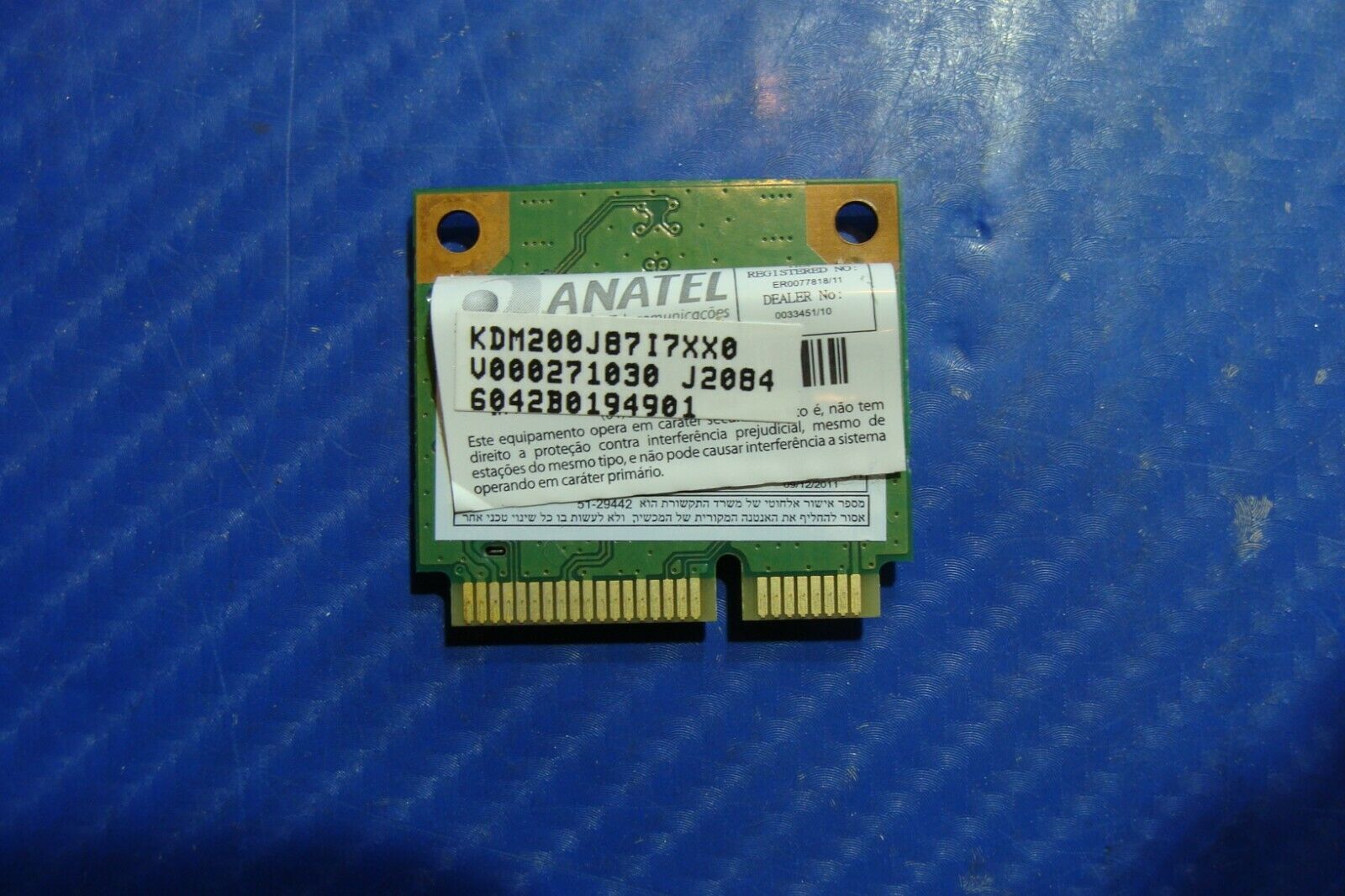

- #Toshiba s855 realtek rtl8723ae wireless update#
- #Toshiba s855 realtek rtl8723ae wireless full#
- #Toshiba s855 realtek rtl8723ae wireless Bluetooth#
- #Toshiba s855 realtek rtl8723ae wireless crack#

Apart from the larger battery options, not much else is offered to expand the functionality of the Satellite S-series notebooks. Provided with the notebook is a small 65W AC adapter, and that’s it. That means that if you’re hoping to connect to a WWAN network, you’ll need to invest in an external USB adapter compatible with the carrier of your choice. It’s worth mentioning that there are no PCI-e mini slots available on the Satellite S855D. Post-update, the adapter now correctly connects to Wireless-N networks at its maximum possible speed of 150 Mbps.
#Toshiba s855 realtek rtl8723ae wireless update#
However, a driver update to the latest version of the wireless driver on Toshiba’s website (dated 8/6/12) corrected this problem. For instance, our 300Mbps MIMO Wireless-N network was only yielding speeds of 54 Mbps to the S855D when first connected.
#Toshiba s855 realtek rtl8723ae wireless full#
The initial wireless driver for the Realtek 802.11n adapter (dated 1/10/12) exhibited problems connecting to some Wireless-N networks at full speed. It’s disabled by default, but is easily activated using the wireless function key (F12) on the keyboard.
#Toshiba s855 realtek rtl8723ae wireless Bluetooth#
There’s also a built-in Bluetooth 4.0 adapter which comes standard using the Realtek chipset. Our Saltellite S855D review notebook includes a single-band Realtek RTL8723AE 802.11n wireless network adapter supporting up to 150 Mbps in a 1x1 antenna configuration. Like most Satellite notebooks, following the removal of four concealed screws, the bezel snaps off from around the perimeter of the panel. The LCD screen, meanwhile, is relatively easy to access and remove in the event of breakage. The bottom of the notebook features a single panel cutout covering both hard drive and memory, secured by just a single screw and some fairly cooperative plastic clips. Besides, sturdiness isn’t necessarily the goal of this notebook rather, it is the compromise between construction and performance which Toshiba hopes will add up to an irresistible price tag.Īlthough there isn’t much room for upgrades (more on that in a bit), thankfully, the S855D also provides easy access to the most important replaceable components. And elsewhere, the positive side of this approach to construction is a lighter overall weight than many all-metal notebooks. In short, the S855D comes off as a pretty fragile machine.įortunately, the display hinges seem very capable, supporting the screen well with very little wobbling. Like that of the palm rest, the thin metal coating on the display lid also looks very nice, but it lacks the rigidity necessary to truly provide any substantial degree of protection against LCD stress and breakage. The only metal to be found is on the palm rest (a decision which undeniably provides a classy illusion of sturdy construction) and the back of the display lid.
#Toshiba s855 realtek rtl8723ae wireless crack#
The area underneath the optical drive and any of the underside vents feel like they could potentially crack if even just squeezed a bit too much. These parts of the notebook can be flexed under moderate pressure and don’t provide much reassurance that the machine could withstand any sort of rough treatment or a minor drop. The underbody, sides, and trim are all plastic as well. The entire core of the notebook is built from hard plastic. It isn’t bad, but it is almost entirely comprised of plastic, implementing metal only where aesthetics benefit most from its application. Immediately obvious is the primary point of compromise chosen by Toshiba in its design of the Satellite S-series: the casing and construction. Grab a snack and let’s evaluate the S855D from top to bottom.

As always, we subjected the notebook to a flurry of intensive tests, benchmarks, inspections, and comparisons. Similarly-equipped models are available directly from Toshiba for around $700. Our Satellite S855D review unit includes an AMD A10-4600M quad-core APU with integrated Radeon HD 7660G graphics. And, finally, the S series-which is what we’re covering today with the S855D-is designed especially for those seeking a high-performance, entertainment-grade PC, but who wouldn’t mind compromising in just a few key areas in exchange for a lower cost. At the top end is the P series, which is crafted out of etched aluminum and features Intel Core i7 CPUs with either integrated or discrete graphics. Next comes the L Series, which steps up into mid-range performance with Intel Core i5 and AMD A8 APUs and integrated graphics. At the bottom of the ladder, there’s the C Series, which provides only the essentials and is meant for those who are mostly concerned with price. Toshiba offers no fewer than four different 15.6-inch Satellite notebook varieties, each targeted at a slightly different market.


 0 kommentar(er)
0 kommentar(er)
